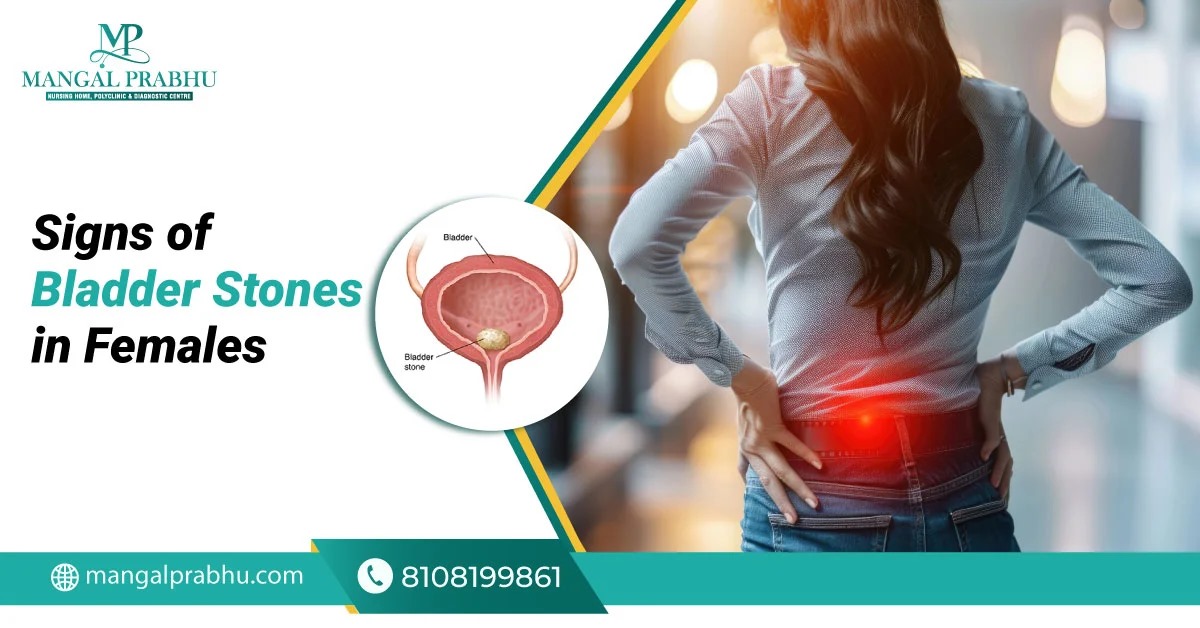
Signs of Bladder Stones in Females
A combination of minerals can crystallize and form a mass in your bladder, leading to bladder stones. Some of these are small and often pass on their own through urine. Others, however, might require a surgical removal. Although it’s more common in older males, anyone, including women, can develop bladder stones.
The common signs are abdominal pain and difficulty urinating. We’ve researched the most common and less obvious yet possible warning signs of bladder stones. Let’s check out the symptoms and when to seek help from a urologist in Navi Mumbai.
Common Signs of Bladder Stones in Females
a) Painful Urination:
The most obvious sign of bladder stones in females is pain while urinating. This happens when the stone obstructs the flow of urine or irritates the bladder lining, making urination painful. The pain is exacerbated if the stones lead to an infection or inflammation in the bladder.
b) Frequent Urge to Urinate:
Stones block the urine flow, making it difficult to empty the bladder fully. This can lead to frequent urination or the urge to urinate more often than usual. The stone can also put pressure on the bladder, causing frequent urination.
c) Hematuria:
Hematuria, or blood in the urine, occurs when the stones in your bladder irritate the bladder lining, which might result in visible blood in your pee. This happens when the stones sit around for a prolonged period or grow in size.
d) Dark Urine:
Less fluid intake or the presence of blood in the urine can make it appear darker. Certain types of stone composition can also change the urine color.
Less Common Signs of Bladder Stones in Females
There are a few less obvious signs that indicate bladder stones. Although they don’t occur in every patient, it’s important to watch out for these symptoms and report them to your urologist.
A) Lower Abdominal Pain:
Bladder stones can cause abdominal pain, which can be mild or severe, depending on the size of the stone. In women, particularly, the pain might radiate to the pelvic floor muscles and the back.
B) Painful Intercourse:
In females, bladder stones can put pressure on the pelvic organs, leading to painful sexual intercourse.
C) Recurrent Urinary Tract Infections:
Bladder stones can lead to stagnant urine, in which the urine doesn’t leave your system because of the obstruction in its flow. This creates a perfect environment for bacteria to thrive, increasing your risk of catching urinary tract infections frequently.
D) Nausea and Vomiting:
If the stones have blocked a significant part of the bladder responsible for regulating urine flow, the patient might experience nausea and vomiting. That’s more common in women with UTI.
When to Seek Medical Help
Visit a urology hospital in Navi Mumbai if you experience persistent pain that gets intense in your lower abdomen. Prompt medical attention is necessary if the pain is accompanied by other bladder stone symptoms, including hematuria, difficulty peeing, high-grade fever, chills, and vomiting.
Bladder stones can grow if they remain undetected and untreated for a long time. Depending on the size and location of the stone, the urologist will either prescribe medication to pass it through urine or remove it surgically.
